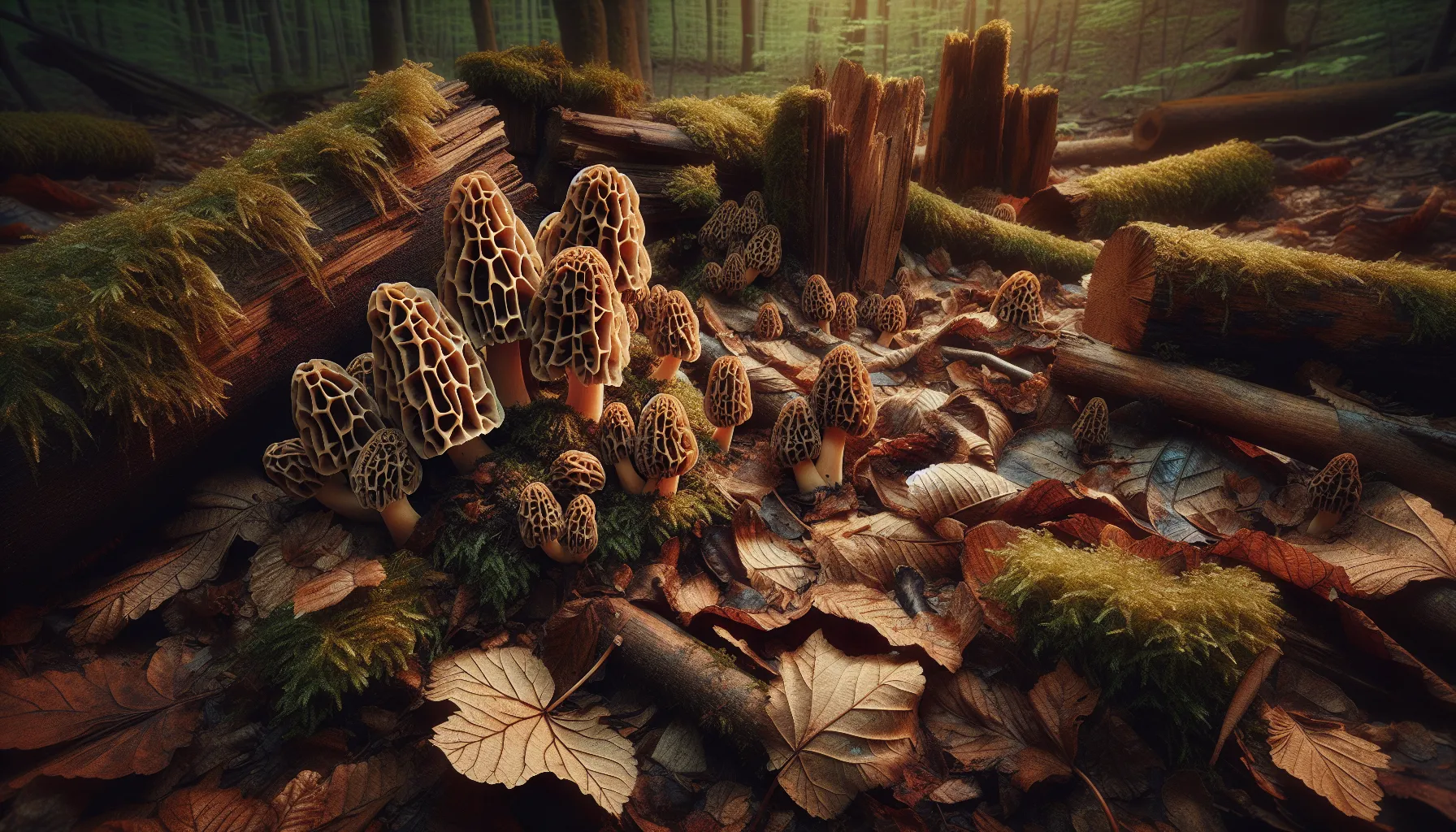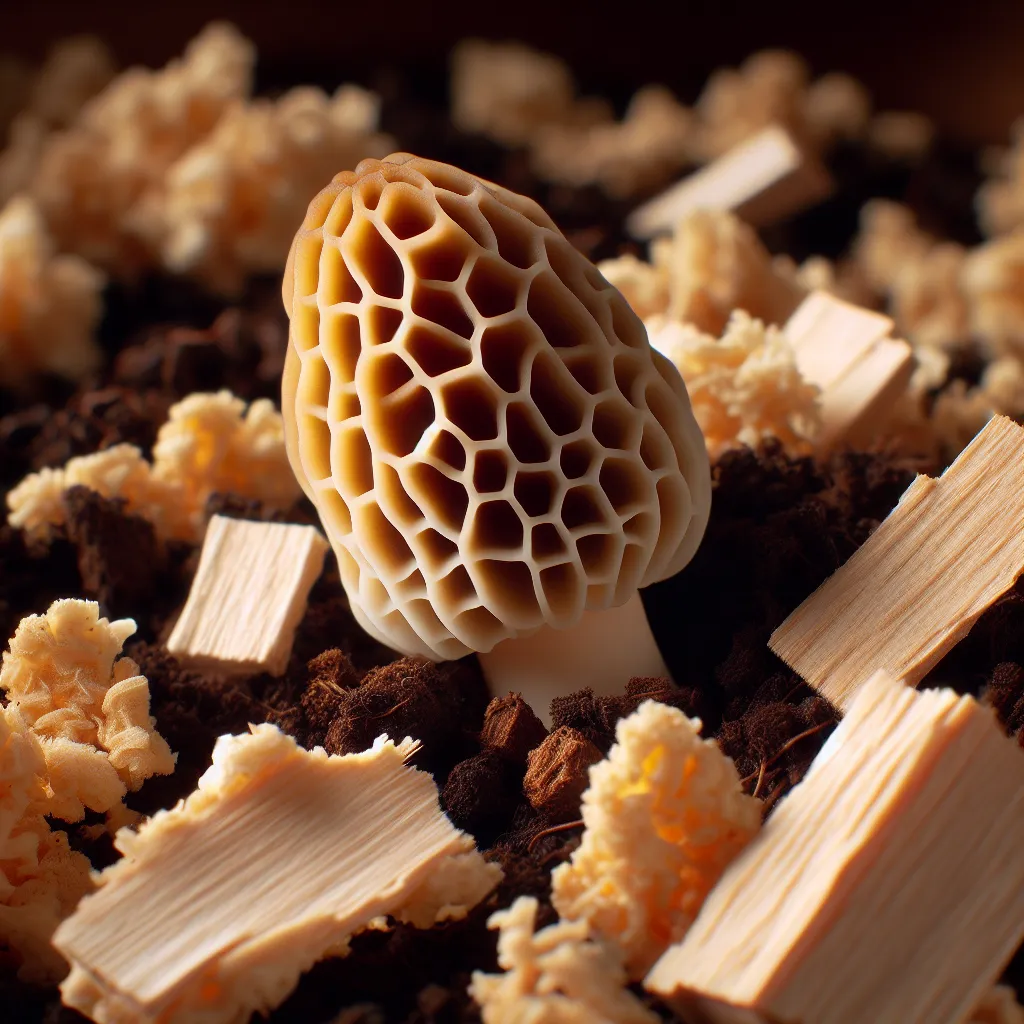Morel mushrooms, with their distinctive “honeycomb” appearance, are among the most prized edible wild mushrooms. They are famed not only for their delectable taste but also for their elusive nature. Finding them in the wild is akin to a treasure hunt, adding to their allure and making them a forager’s delight. However, what if you could cultivate these rare gems in your own backyard? This comprehensive guide will walk you through the fascinating world of growing morel mushrooms, from understanding their unique biology to creating the perfect environment for them to thrive.
Understanding Morel Mushrooms
Before diving into cultivation, it’s crucial to understand what makes morel mushrooms unique. Unlike plants, morel mushrooms are fungi, meaning they do not produce seeds or possess roots in the traditional sense. Their life cycle is different from that of plants, and their requirements for growth reflect this difference. They flourish in specific conditions that can be challenging to replicate but not impossible.
The Natural Habitat of Morels
In the wild, morel mushrooms often appear in the spring, gracing the forest floor from March through May. They are particularly fond of areas that have recently been disturbed, such as burn sites or regions where trees have decayed. These conditions create a rich and loamy soil, packed with nutrients, which morels find irresistible.

Creating the Ideal Soil
To emulate the natural conditions morels love, you should prepare your soil meticulously. Incorporate wood ash, wood chips from hardwood trees like ash or elm, and sand to mimic the forest floor. Avoid artificial fertilizers, as they can harm the delicate balance required for morels to grow. Instead, consider using composted manure to enrich the soil.
Light and Shade
Since morels do not rely on photosynthesis, they do not require direct sunlight. In fact, they prefer dappled shade, much like the conditions under the canopy of a forest. When selecting a spot for your morel garden, aim for an area that mimics this light filtering.
Water and Moisture
Moisture is critical for morel growth. The soil should be consistently moist but not waterlogged. Chlorinated tap water can be detrimental to morels, so use non-chlorinated sources like well water or collected rainwater whenever possible.
Temperature and Climate
Morels are sensitive to temperature. They thrive in cooler conditions with temperatures ranging from the low 50°s F during the day to the mid 40°s F at night. Overcast and rainy weather can extend the growing season, providing the right balance of moisture and temperature.
Cultivating Morel Mushrooms
Now that we understand the optimal conditions for morel growth, let’s explore the methods of cultivation.
The Growth Kit Method
Growth kits offer a convenient way to start your morel cultivation journey. These kits typically include a block of soil infused with morel spores, known as spawn. Prepare your growing bed according to the conditions outlined above, then mix the spawn with hardwood chips and incorporate them into the soil.

Patience is key, as it may take a couple of years before you see results. To increase your chances of success, consider the Backyard Morel Mushroom Growing Kit by GMHP Gourmet Mushroom Products, which comes with detailed instructions and a promising grow rate.
The Spore Slurry Method
If you’re an experienced morel hunter, you can try the spore slurry method. This involves creating a liquid mixture of morel spores, non-chlorinated water, a tablespoon of molasses, and a pinch of salt. After letting the mixture sit for two days, strain and spread the spore-laden liquid over your prepared bed.
This method is less costly but also less predictable compared to growth kits. You will still need patience, as it can take years to see growth. To learn more about this technique, refer to resources like Fungi Ally, which delve into the intricacies of mushroom spore propagation.
The Reward of Patience
Growing morel mushrooms is not a quick endeavor, but the potential rewards are worth the wait. The satisfaction of harvesting your own morels, coupled with the delightful culinary experiences they offer, is an unmatched achievement for any mushroom enthusiast.
In the interim, as you wait for your morels to mature, continue to educate yourself on foraging and cooking with these fungi. Websites like Morel Mushroom Hunting Club provide invaluable information on foraging techniques, while culinary sites offer inspiration for cooking with morels.
Conclusion
Cultivating morel mushrooms is a journey of experimentation, patience, and a deep appreciation for the subtleties of nature. By carefully creating a conducive environment and nurturing the spores, you could be rewarded with a bountiful harvest of these elusive fungi. Remember, the best things often take time, and with morels, your patience could lead to the ultimate gourmet prize right in your backyard.
